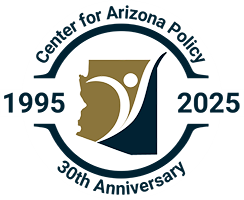 Despite lofty promises from the marijuana industry, legalizing recreational marijuana has been detrimental to Colorado.
Despite lofty promises from the marijuana industry, legalizing recreational marijuana has been detrimental to Colorado.
A recent conference in the Phoenix area, “Legalized Marijuana: The Unintended Consequences,” organized by MATFORCE and Arizonans for Responsible Drug Policy, highlighted the unintended consequences of legalizing marijuana. One of the sessions at the conference focused specifically on the unintended consequences of legalizing marijuana in Colorado.
For this week’s 5 Minutes for Families, I wanted to outline some of the problems Colorado is facing after legalizing recreational marijuana in 2013.
Increase in Marijuana-Related Traffic Deaths:
- Marijuana-related traffic deaths when a driver was positive for marijuana more than doubled from 55 deaths in 2013 to 123 deaths in 2016.
- Marijuana-related traffic deaths increased by 66% in the four-year average (2013-2016) since legalizing recreational marijuana compared to three-year average (2009-2012) prior to legalization.
- In 2009, 9% of all traffic fatalities in Colorado involved operators testing positive for marijuana. By 2016, the number doubled to 20%.
- Marijuana, as a percent of all Driving Under the Influence of Alcohol/Driving Under the Influence of Drugs cases is increasing since legalization: 12.2% (2014), 13.4% (2015), and 17.2% (2016).
Increase in Youth Marijuana Use:
- Since Colorado legalized marijuana the youth past month marijuana use increased by 20% in the two-year average (2013-2014) compared to the two-year average prior to legalization (2011-2012).
- The latest 2014-2015 results show that Colorado youth ranked #1 in the nation for past month marijuana use.
- Colorado youth past month marijuana use for 2014-2015 was 55% higher than the national average, compared to 39% higher in 2011-2012.
- Marijuana offenses in Colorado elementary and high schools have increased since legalization: 1,766 (2012), 1,980 (2013), and 2,363 (2014).
Increase in Marijuana-Related Health Emergencies:
- The Colorado Emergency Department visits per year related to marijuana has increased: 8,197 (2011), 9,982 (2012), 14,148 (2013), and 18,255 (2014).
- The number of hospitalizations related to marijuana have increased dramatically: 6,305 (2011), 6,715 (2012), 8,272 (2013), and 11,439 (2014).
- Average number of marijuana only exposures reported to Rocky Mountain Poison and Drug Center increased from 43 (2009-2012) to 134 (2013-2016) after legalization.
- The number of marijuana-related poison control calls involving children under 9 years of age increased 206% post-legalization: 16 (2012), 26 (2013), 44 (2014), and 49 (2015).
- Children’s Hospital Colorado reported 1 marijuana ingestion among children under 9 years old in 2009 compared to 16 in 2015.
- Percentage of Colorado adolescent suicide victims positive for marijuana has increased post legalization: 13.5% (2006-2008), 13.8% (2009-2011), and 16% (2012-2014).
Increase in Marijuana Culture:
- As of June 2017, Colorado has 491 retail marijuana stores compared to 392 Starbucks and 208 McDonald’s.
- The percentage of adults 26 years of age and older using marijuana is steadily increasing each year since legalization: 7.63% (2011-2012), 10.13% (2012-2013), 12.45% (2013-2014), and 14.65% (2014-2015).
- In 2012, out-of-state residents accounted for 78 of every 100,000 emergency room visits due to marijuana-related symptoms. By 2014, the number increased to 163 of every 100,000 visits, a 109% increase.
- Average pounds of black-market Colorado marijuana seized per year by the U.S. Postal Inspection Service has increase 914% post legalization, from 97 pounds (2009-2012) to 984 pounds (2013-2016).
- Arrests/citations for unlawful public display or consumption of marijuana in Denver has increased from 184 in 2013 to 752 in 2015.
- Legalization of marijuana may have contributed to increase of homelessness in Denver, from 28,000 accommodations per month in 2012 to 42,000 accommodations per month in November 2015.
The above numbers make clear that legalizing recreational marijuana is bad public policy. It might please marijuana users and fatten the wallet of the marijuana industry, but it puts families and children at risk. To be sure, Colorado has benefitted from tax revenues from the medical and recreational marijuana industry, but is .8% of the state’s budget worth all the harm it has caused its citizens?
For additional reports tracking the consequences of legalizing marijuana in Colorado see Rocky Mountain High Intensity Drug Trafficking Area (RMHIDTA).
ICYMI – Latest News & Articles of Interest
- “Why the Department of Justice’s Religious Liberty Guidance Matters” from the Ethics and Religious Liberty Council (ERLC).
- In September, CAP’s friends-of-the-court brief in Masterpiece Cakeshop vs. Colorado Civil Rights Commission was filed alongside International Christian Photographers in support of Masterpiece Cakeshop and its owner, Jack Phillips. The U.S. Supreme Court recently scheduled the oral argument for Tuesday, December 5, 2017.
- Bruce Ashford provides a very helpful theological analysis of transgenderism in his article, “An Evangelical Guide to Transgenderism (3): The Bible and Gender Identity.”

